How To Build Own Blog Site
Starting a blog for the first time is an amazing, yet intimidating experience.
Thinking that people are actually going to read – and even share – something you wrote. It's unlike any other feeling I can describe.
But it's not all rainbows and butterflies. Starting a blog is hard work, and there are a lot of pitfalls along the way. Especially if you're a newbie.
So many pitfalls, in fact, that we've come up with this tutorial. It's a full list of 45 things we wish we knew before starting our first blogs. That way, you don't have to make these mistakes yourself!
How to start a blog the right way
But who are "we" exactly, right? Well, this post is a group effort. It features three bloggers chipping in and sharing their best advice on how to start a blog, and not only that, but how to start a successful blog and make money from it as well. 🤑
So grab a coffee and get cozy, we're about to review everything we've learned in the past 8+ years. Enjoy!
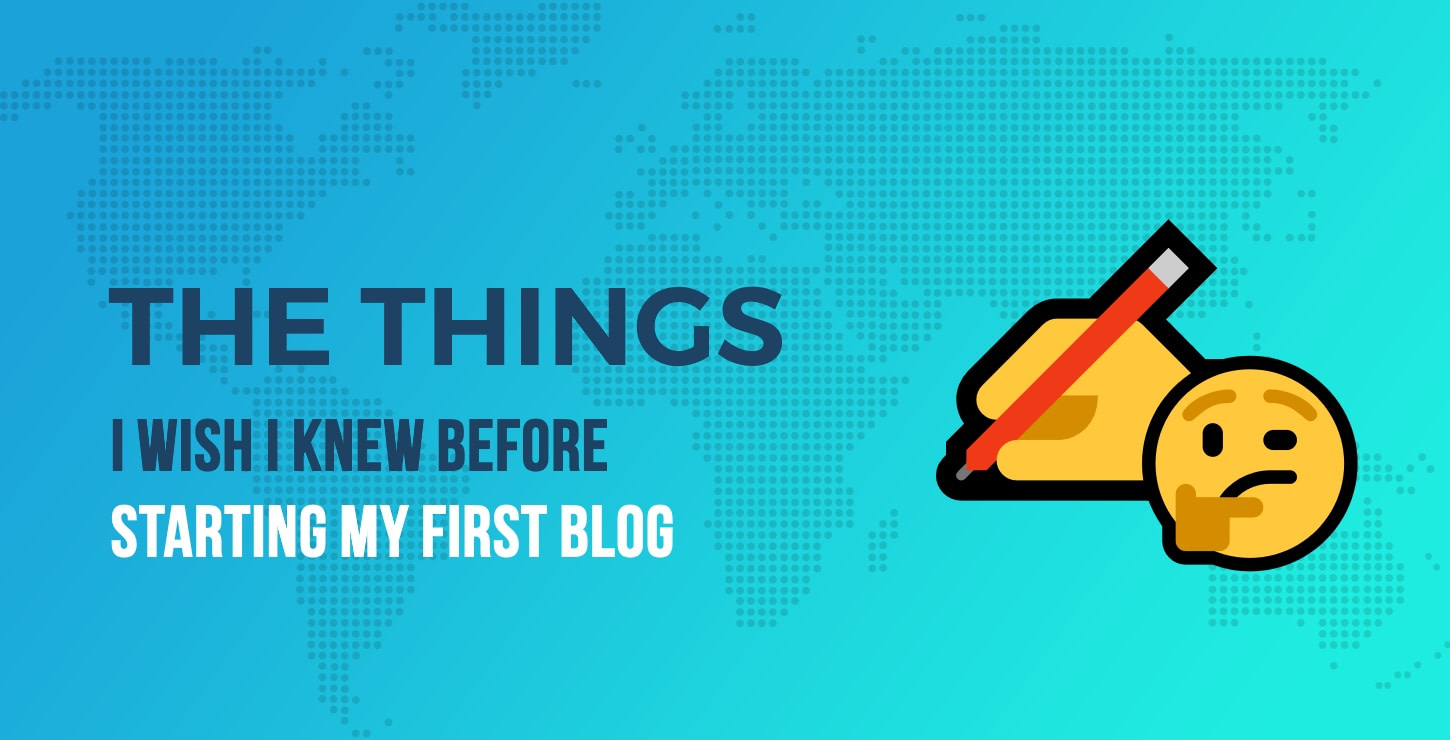
If you're interested in a full, no-holding-back tutorial on how to start a blog then we have that for you! It's a complete walk-through from nothing to a live blog that's optimized and ready to welcome your readers. The guide was written based on our experience growing this very blog to 400,000 monthly readers.
👉 Click here and go to the guide. It's 100% free.
⏲️ In a hurry?
Here's how to start a blog in 8 steps (takes less than an hour):
When it comes to the technical side of things, starting a blog is actually really straightforward. All you do is:
- Find a nice blog domain name and register it.
- Pick a blogging platform suitable for new bloggers – usually WordPress.
- Sign up for a blog hosting account – Bluehost is what we recommend as the best place to start a blog.
- Install WordPress.
- Pick a blogging WordPress theme.
- Install a set of must-have WordPress plugins for blogs.
- Customize your site and fine-tune the blog settings.
- Write and publish your first blog post.
Doing all these steps – even though they might seem like a lot – is quite trivial, since you're being taken by the hand along the way; first by your hosting company, and then by the WordPress dashboard itself.
💡 Note; When you're ready to buy your hosting, make sure you use the above link for Bluehost. It is an affiliate link (meaning that we'll get a small commission), however, it will also unlock a $2.75 vs $3.95 discounted price for you. You won't get this discount if you visit the Bluehost site in any other way than via the link above.
📚 Table of contents:
- 45 things you should know before you start
- FAQ on starting a blog
- How to start a blog in 2021 – THE GUIDE
45 things you should know before starting a blog…
With the following resource, we've decided to focus on the most challenging stuff when starting a blog.
We're going to cover everything from tech, to writing, SEO, designing images, marketing, tools, security, and a million more things.
✍️ Other blogging resources you might enjoy:
To start with, since it's probably been the most important piece of many a blogging career, let's talk SEO!
More specifically, let's talk about how easy SEO really is, and the common mistakes people make when starting a blog. First, let's hear it from Bill:

Bill Widmer
A content marketing and SEO consultant. Has 2,500,000-words of experience publishing content.
1. Use SEO to drive tens of thousands of visitors every month
SEO, or search engine optimization, is the art of optimizing your content in order to rank for certain keywords on search results like Google.
SEO is an umbrella term including keyword research, link building (the process of acquiring links to your site from other sites to improve your search rankings), and a whole slew of other actions needed for best performance.
But more on that later in this guide. For now, while it may sound intimidating, it's actually a simple process that should be considered when starting a blog. It works like this:
I. Find keywords with a fairly low ranking difficulty around your niche.
You can use a tool like Ahrefs, Moz, or SEMrush to see keyword search volume and difficulty. Here's how using Ahrefs for keyword research looks:

II. Create content that's the best on the web for the topic and keyword you've chosen.
There are two steps here:
First, pick the keywords that you want to target when starting a blog. But don't just guess. This goes deeper.
You should only pick the keywords that are both popular with people and ones that you're also able to rank for. There's a different degree of difficulty with keywords, and some will unfortunately be above what you can target in your first couple of years blogging.
Here's a guide to keyword research done right for WordPress websites.
Okay, so that's step one. Step two is to create content for (or rather about) those keywords.
Look on Google to see what's ranking in the top 10 results, then do everything you can to make a better post. That could mean better images, more in-depth explanations, linking to more resources, or all of the above together.
III. Spend just as much time promoting that content as you did creating it. Maybe more.
That doesn't just mean sharing it on social media, either. You should do email outreach to influencers, write guest blog posts (some strategies), and even consider paid promotion like Facebook ads or Quuu Promote.
Here's an example of Quuu's ROI on $10 spent:

And that's for a very small niche – RVing and campervans. It's way more impactful with bigger niches, like any kind of business, marketing, or travel.
Oh, and in case you come across it, I highly recommend white hat SEO (valid tactics according to Google's terms of service) over black hat SEO (tactics that work, but are against Google's policies and can penalize your site).
Now, obviously, there's a lot more to SEO than I can explain in 250 words. But this gives you the basics, which really aren't difficult.
To learn more, here's a practical SEO guide from Alex. It's in-depth and gets you through all the important stages of developing an SEO strategy and executing on it which is very important when starting a blog.
2. Build links to boost your rankings
I put link building right after SEO because it's really just an extension of SEO. Backlinks to your website are one of Google's strongest indicators for ranking a site higher.
It's a lot of work, but isn't necessarily difficult or complicated. It's just a matter of networking, building strong relationships, and targeting your content to the people who can provide links.
Here's a quick and dirty overview to link building:
First, you need high-quality content. No one is going to link to garbage, and it doesn't matter if you're just starting a blog or have been around for a while.
Brian Dean actually recommends creating content specifically for the people you want links from, rather than focusing on keywords first. It's worked for me.
Once you have quality content, reach out to anyone you linked to in your article. These people are the most likely to share and link to it, since they have a stake in it.
(Hint: The better you make people look, the higher the chance they'll link to you.)
For example, here's an email I sent out to all 30+ people who contributed to the last post on my blog:

If you want to automate this process, you can use an email outreach tool like MailShake.
This isn't the only way to get backlinks, though.
There are tons of other backlink building techniques you can use, like resource page link building, broken link building, and getting links from people who write roundups, to name a few.
For a more in-depth overview of link building when starting a blog, check out Ryan Stewart's strategies for bloggers.
3. Go for quality over quantity (underrated by most people learning how to start a blog for free)
This is a lesson I've learned in my study of SEO, and in how to create a blog in general. Quality always beats quantity when it comes to blog posts.
Pushing out daily or even weekly posts simply isn't necessary. If you do things right, once a month is plenty. That gives you the whole month to spend on promotion.
Google used to give some merit to sites with fresh content.
Then sites started abusing that and pushing out a dozen crappy articles a day. It worked for a little bit, but then Google laid down the ban hammer. Now those sites are extinct.
Besides, would you rather have ten OK posts on your blog, or two really great ones? I'd rather have the two great ones. Especially because, as those high-quality articles gather backlinks, they have more authority and increase the value of internal links (which I'll talk about next).
If you want to learn how to create truly amazing content, check out this guide.
4. Use internal linking to help Google (and people) navigate your site
Internal links are especially important when you're starting a blog. They're simply links from one page on your site to another page on your site. (Where external linking is a link from a page on your site to a page on another person's site.)
Internal linking is important for SEO, but it's also important to help your readers get around your blog. It's also a great way to get new readers to read old content.
Plus, when you learn how to start a blog and have a post that ranks highly in search engines and got a lot of backlinks, any internal links from that page to your other pages helps boost those pages' rankings.
Here's a visual to help explain that:
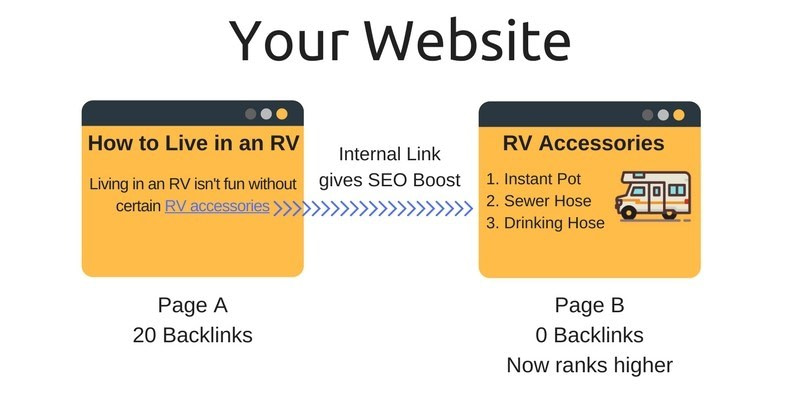
I hope that helps you understand it. For more info, Andy Crestodina from Orbit Media Studios wrote an excellent guide to internal linking. Give that a read if you want to learn more.
5. Guest blog for more traffic, better SEO, and brand awareness
Guest blogging is a strategy for getting backlinks and traffic to your site. You're essentially borrowing (stealing?) another authoritative blog's traffic.
You've probably seen or heard of this before. It works like this:
First, you have to find a blog you'd like to write for. (If you've been blogging for awhile, you probably already have some in mind.) Look for the people who are industry leaders in your niche or a very related niche.
For example, I'm a content marketer. So I read blogs about content marketing, like Content Marketing Institute, who has over 100,000 email subscribers and a domain authority (DA) of 85.
(Note: Domain authority is a rank on a scale of 1-100 that shows how authoritative a site is. It's based on their link profile, age, and a ton of other factors. Higher is better because it gives you a bigger SEO boost.)
I wanted to write a post on their blog to increase my brand awareness. It's like a badge of honor, almost – and it would help me land clients by getting there, since it's so well-known in my industry.
To do that, I reached out to my network to see if anyone had a contact there with an editor. Turns out, they did! That got me an in. Here's my post:

Speaking of how to add new attractive blog posts, we'll actually talk about formatting later in this guide. But for now…
What if you don't have a network when starting a blog? What if you're just starting from scratch?
My good friend Aaron Orendorff talks about that exact problem during his interview on the Rebel Growth podcast. It's worth a listen!
6. Use social media to drive thousands of converting traffic
Social media and blogging are two peas in a pod. You can't really have one without the other.
But, there's nothing more frustrating when you're trying to learn how to create a blog and spending four hours writing a blog post, only to see zero engagement. No comments, no shares, and your one like is from grandma.
That's because most people do social media all wrong. They use it as a publishing platform where they just push out their blog posts. Social media isn't an RSS feed!
So, how do you use social media the right way?
By networking and being social. (You'll start to notice that almost everything in blogging revolves around networking.)
Let me give you a perfect example: I have a Facebook page for my RV travel blog. Whenever I add new posts, they almost always get less than 5 likes, no comments, and no shares. But then I implemented this simple strategy…
I created a high-quality post that involved over 30 other RVers – many of whom have lots of social media followers themselves.
Then, I wrote a Facebook post and tagged all of them in it.
Look at this engagement:
As you can see, 1,840 people were reached organically, with 11 shares and 21 likes. (Note: The 769 paid results are from a $5 test I spent just to see how well paid promotion does. I'll talk about that later.)
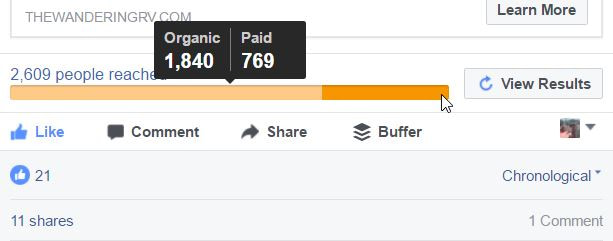
But it gets better. I also posted the link in a relevant niche Facebook group. That post got over 56 likes, 10 comments, and drove nearly 600 in traffic to our blog!
And all that to a new Facebook page with fewer than 100 likes.
Moral of the story? To get social engagement, engage with other social people. Tag everyone, be present in Facebook groups and build solid relationships. That way, even when just starting a blog, you can still get a ton of engagement.
Pro Tip: While you shouldn't automate everything on social media (since people will be able to tell), you can use automation to build a real, engaged following. For example, you can use a tool like Narrow to interact with Twitter users that are talking about subjects relevant to the audience you want to attract. Or, use a free tool like Revive Old Post to get more eyeballs on your archive content.
7. Create amazing images to increase shares, backlinks, and subscribers
Creating high-quality images is not only easy, it's also affordable and fast. And it's a must-have in today's highly competitive world.
If you look at the top blogs in your industry, do they use a lot of quality images? I think we both know the answer.
Images make it easier for people to read your content, keep them on your page longer, and help readers digest the information you're giving them.
So how do you create awesome images?
Here are all the tools you need:
- Canva – A design tool for non-designers. Free, with some paid icons. Also has a $10/month version with added functionality, like instant image resizing.
- Relay That – An amazing image creation tool that creates images for you! Unlike Canva, you don't even need to design it yourself. Get everything you need at the click of a button.You can get a free version or pay $16/month for the basic package.
- Unsplash – A directory of free, high-quality stock photos.
- MyStock Photos – Similar to Unsplash, with even more photos.
- Iconfinder – Get high-quality icons for just a dollar or two.
Pro Tip: Add charts and graphs when relevant. It's actually easy to create charts and graphs with Visualizer and seeing data visually helps readers process it quickly, and looks really nice in a post.
To learn more about designing great images, check out this guide (on creating images from scratch) or this one (on getting and then tweaking free images).
8. Format your blog post to make you look like an expert
Just like beautiful images increase reader's time on page and engagement, so does a well-formatted piece.
Let's face it: People don't read everything word-for-word anymore. The average internet reader today skims. There's just too much content and too little time to do anything else.
That's where formatting comes in. A well-formatted post makes it easy for your readers to skim (to see if the post is worth their time), then dive in if they feel it is.
So how do you go about formatting when starting a blog?
Here are some pointers:
- Divide long text with headers and subheaders
- Use bulleted and numbered lists to point out key information
- Bold and italicize key points (but don't use both at the same time)
- Add quality images (rule of thumb is to use one every 300 words or so)
- Use short paragraphs (no more than 3 to 5 lines at most – this helps with skimming and mobile reading)
Check out our full guide to WordPress formatting to learn more.
9. Use content upgrades for 785% more conversions
I'm sure you've heard of a lead magnet. It's basically something you offer your audience for free in exchange for their email, like an eBook, checklist, or worksheet.
A content upgrade is like a lead magnet on steroids. They're created for one specific blog post and highly related to that post.
For example, Formilla created a blog post titled "25 Customer Service Scenarios (And How to Handle Them)".
From this page, they have a content upgrade that allows you to download the guide as a PDF:

This upgrade converts for them at around 10% – much higher than a typical lead magnet. And all they had to do was download their post as a PDF and offer it to their readers. Easy peasy.
But, if you really want to be a successful blogger, you should offer additional bonus content, like Brian Dean's checklist offerings:
Content upgrades work so well because they're created to help someone achieve the exact objective they came to your page to achieve.
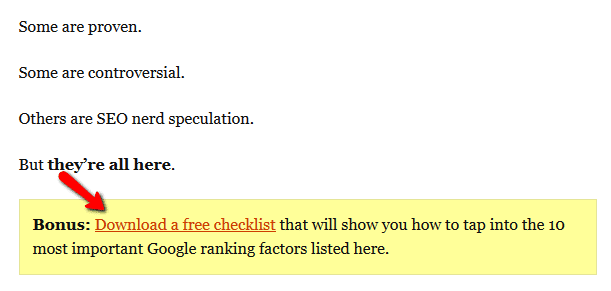
If you're writing about Facebook ads, a content upgrade on Facebook ads is way more likely to convert than a lead magnet on general marketing.
The key with content upgrades is to offer them from day one when starting a blog. To learn more about offering content upgrades on your blog, check out this guide.
10. Add call to actions to get the most from your audience
Not leveraging call to actions (CTAs) back when I was figuring out how to start a blog was a major mistake for me.
A CTA is anything you want for your customers to take action on. It could be subscribing to a newsletter, reading another blog post, or making a purchase. A content upgrade is an example of a CTA.
Every single one of your posts – and especially when starting a blog for the first time – should have a CTA of some kind. Whether it's as simple as a request for a share or a comment, or as big as making a purchase, every post should have an outcome.
If your post doesn't have a CTA, you're missing out on tons of potential sales, leads, and traffic generation opportunities.
I'm not saying every post needs to sell something. It just needs to give your reader a "next step".
For example, if you're enjoying this post so far, would you mind taking a second to share it with your audience? That's me calling you to take action. Just one click:
Yes, it benefits us by improving our reach. But it also benefits you by showing off helpful content on your social media channels. People will see you as someone to go to for good information.
11. Use influencer marketing to 10x your audience
Influencer marketing is a hugely under-rated tactic.
I've seen influencers achieve incredible results.
For example, RESCUE had natural remedies it wanted to promote. Their outreach campaign resulted in 133 million social media impressions, more than 6,000 clicks to the coupon site, and a 258% increase in their Instagram following.
They're not alone, either. Hundreds of companies are seeing similar success. In my post with the 30 full-time RVers, for example, the influencers in that post drove several hundred visitors to my site.
Pro Tip: Use an influencer database to find influencers in almost any niche to help you promote your posts – a great thing to build as you're starting a blog.
So how's it done? Read this full guide to influencer marketing to find out.
12. Always be networking. Always.
The more your network grows, the easier it becomes to promote your work, and the more opportunities naturally come your way.
Prime example: My freelance writing career took a massive upswing this past January. I was able to get into a Slack group consisting of some of the most well-known marketers and writers on the web.
My income tripled almost overnight. They gave me opportunities I never would have dreamed of. Their influence got me in doors, and they're marketing expertise almost 10x'd my ability to promote my posts.
Once that happened, my eyes were open. Networking went from an afterthought to one of my main priorities. I truly believe that, with the right network, anything is possible.
Some quick tips for developing your network:
- Always look for ways you can help people. Share other bloggers' content, comment on their blog posts, follow them on social media, and send links and people their way.
- Join groups and forums around your interests. I'm in Facebook groups around content marketing, SEO, and full-time RVing. They're interesting, and I always find myself learning and meeting new people.
- Take online courses. Many of them have private communities you can become a part of. This opens the door to plenty of like-minded people. Plus you get to learn whatever the course teaches.
Here's a post in one of the groups I'm in that's taught me a lot and even landed me two new clients:
(I found out, by the way, that Google hadn't indexed the sites that linked back to me yet, and that's why I wasn't getting credit for them. To get around this, I submitted the URLs that linked to my post to Google's URL crawler.)
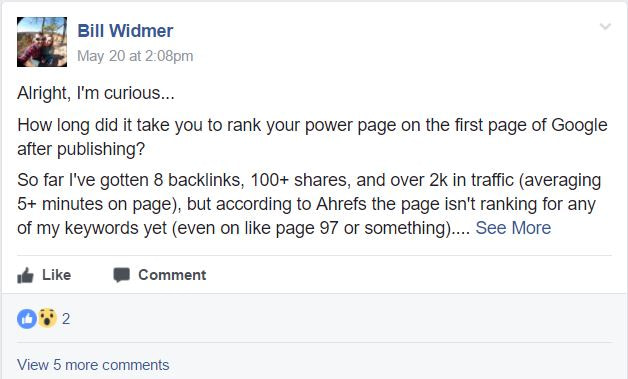
One last tip: Don't let relationships fade. Make it a point to reach out to your new network at least once or twice a month. Shoot them an email with a cool article, or tag them in something interesting on social media.
13. Build an email list from the start, and don't forget to send them stuff
Over time, your email list will become your biggest source of traffic – and sales – if you treat it right.
Imagine this:
You wake up, excited for the day. You put on a pot of coffee. While you're waiting for it to brew, you head into your home office to check your email.
There's over $1000 in sales from the email campaign you sent last night.
You grab the coffee, and while you're drinking it, write up another email to be sent out on schedule. Then you go off and do whatever you want – your work is done for the day.
Basically, your life becomes a typical stock-photo scenario. Like this one:

Some people really do have it that good. An email list makes that possible. Of course, as you're learning how to make a blog, you'll still have to write blog posts and run your business (unless you hire those out), but your work load can be seriously reduced.
Building an email list should be a priority when starting a blog and even before you write your first blog post. But if it wasn't, that's OK – make it a priority today.
- Get an email marketing platform like SendinBlue, or ConvertKit, if you don't already have one. I use Convert Kit because it's easy to use and it works. (Editor's note: Here's our own list of good alternatives and more cost-effective solutions.)
- Add exit-intent and on-scroll popups using a tool like Sumo. This is where you can offer your content upgrade or lead magnet.
- Place in-line opt-in forms like Brian Dean's or Formilla's. You can offer your content upgrade, lead magnet, or simply give users the option to subscribe.
- Use a tool like LeadPages to create strong landing pages for your offers.
For a more in-depth look at list building, check out these actionable list building tips.
14. Stick to a theme for better SEO and a stronger follower base
One of the biggest mistakes I made early on, and see other bloggers making, is not sticking to a theme for your posts.
I get it – people are diverse. We all have multiple interests. You might be a photographer who also loves travel and marketing. But your blog won't benefit from talking about all three things. Here's why:
- Finding the right readership will be difficult. How many people do you know that are travelers, photographers, and marketers? (OK maybe that's a decent-sized niche, but you get the point.)
- SEO will be more difficult. Google likes sites that are solely dedicated to a single topic because it knows exactly what that site is about.
- Monetizing your blog will be harder. Money comes from direct, targeted traffic. If you're spreading yourself too thin, you won't get the quality traffic you need.
If you really must talk about different things, I recommend starting a blog that's totally separate. Unless you can really find a niche audience and still have very strong posts around each topic, it's just not worth it.
15. Use your audience to choose topics
Randomly picking topics based on what you think your readers might like is a lot like playing the lottery. Maybe you win, maybe you don't.
But what if you let your audience tell you what they want to hear about? That's a guaranteed win.
Here are a few ways you can find out:
- Reach out to them on social media or via email and just ask!
- Send out a survey to your email list, or by using Qualaroo.
- Read the comments people left on your blog or on competitor's blogs.
- Go to forums in your niche and see what people are asking about.
- Use Buzzsumo to find common questions around your topic:
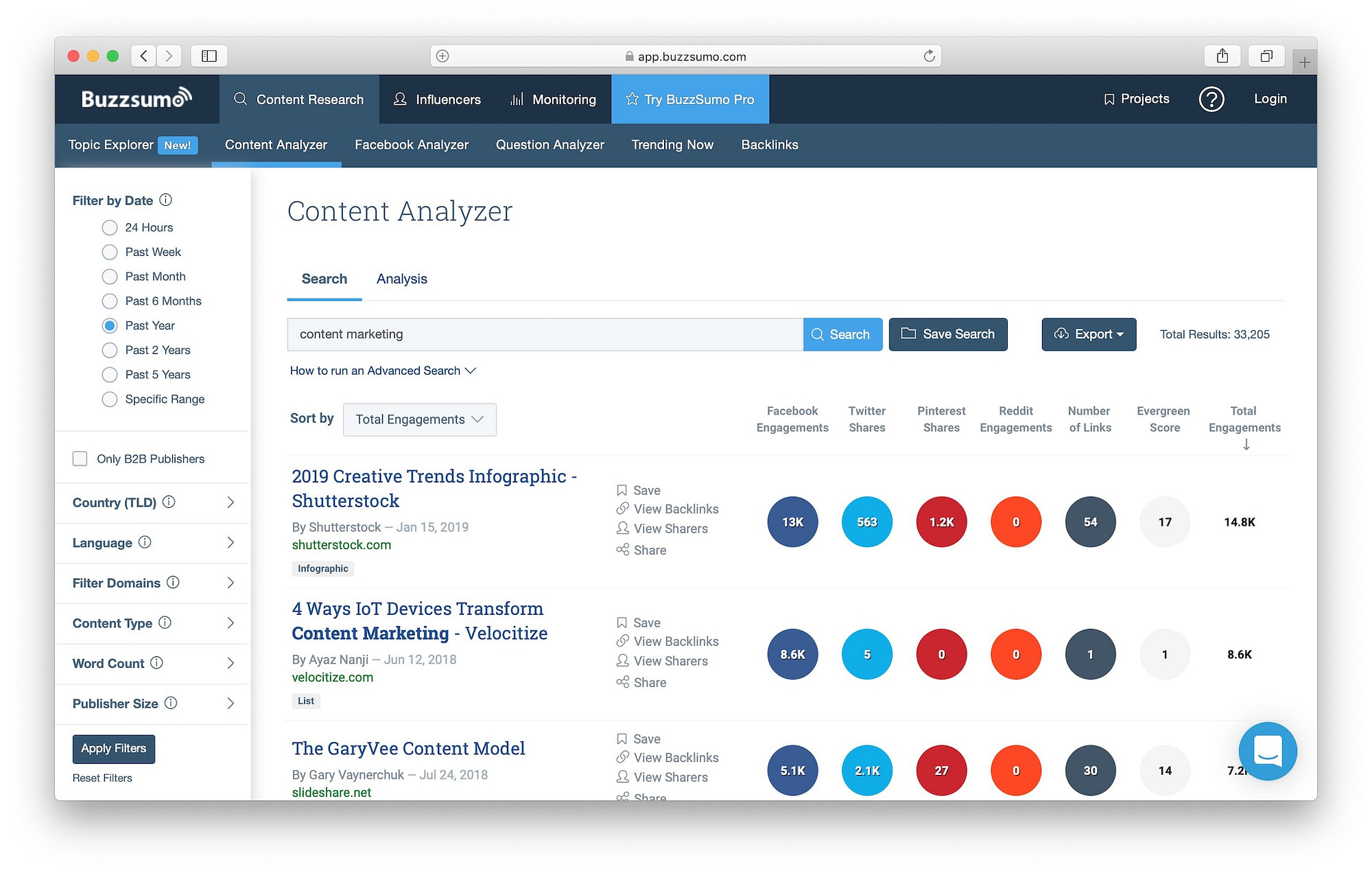
The cool thing about Buzzsumo is that once you write an article answering a common question, you can go to that forum where they asked and link back to the article. (Just make sure to add more insight and not just a link, or you'll get banned from most places.)
So asking your audience is pretty easy. You can even do the last three ideas if you're just starting out and don't have an audience yet.
16. Share your content somewhere besides social media
Most people usually post their new blog article on social media when it goes live… but then they don't share it anywhere else. This is one of the huge mistakes people make when promoting their posts.
What else can you do? We already talked about email outreach and working with influencers. But there's so much more work to be done!
Here are the best places to share your new blog post:
I. Niche-related forums
You probably saw this one coming after tip #15. Forums are a great way to get long-term traffic because (if done right) your post will stay there for a long time and even possibly show up in search results.
You can find forums by searching on Find a Forum or by googling inurl:forum + "your_keyword"
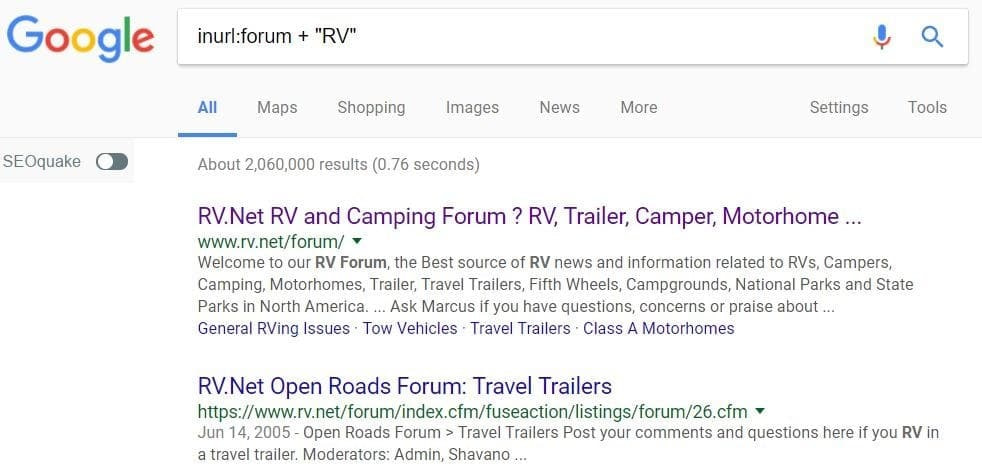
Once you find the forum, you need to become a member. This isn't just a quick, "pop in and leave a link" strategy. You'll get banned pretty quick doing that so it won't do you any good when starting a blog.
I recommend leaving at least 20 to 30 high-value comments before any self-promotion. (High-value meaning thought-provoking and helpful, not just "Nice post!".)
Kristi Hines gives some great tips on forum marketing in her guide on Hiveage.
II. Quora
Quora is a place for anyone to ask anything. Anyone can go and leave an answer.
Search Quora for questions related to posts you've written, write a thoughtful answer and link back to the post with more details. Easy peasy.

With that particular post, I didn't even have to answer it myself! Steve Curtin, an influencer we worked with, answered it for me. (See how all this stuff is so connected?)
Here's our guide on how to get started with Quora marketing. Check it out for more details.
III. Social media groups
I briefly mentioned Facebook groups in the section on social media, but I wanted to talk about them more.
Social media groups, like those on Facebook, LinkedIn, and Google Plus, are an amazing way to drive highly targeted traffic. The 600 new visitors I got from one post proves that.
They're easy enough to find. Just search on Facebook or LinkedIn and click on "Groups". For Google Plus, go to the "Communities" tab and search there. Join any relevant ones.
Like forums, don't just spam your stuff. Become a loved member of the community. Engage with the people and share other people's stuff. Once the group members know your face and like you, then you can share your own posts. And don't forget to respond to their comments!
17. Give your "About" page some love
If you don't have an about page, you're doing it wrong. Building one really is a must when starting a blog.
In the blogging world (and especially when you're new, learning how to start a blog), people follow people who they know, like, and trust. How can you know, like, and trust someone who doesn't show their face or have a compelling story?
When someone looks at your about page, what do you want them to see? A crappy page put together as an afterthought, or one built to draw users into your personal or brand story?
Check out this guide on how to create an about section for your site.
18. Leverage paid social media advertising for better reach and to make money with your blog
Paid ads aren't just for selling things. You can use them to promote your blog posts, too!
In fact, I recently promoted a post with affiliate marketing links in a $5 Facebook ad test campaign. (The one I mentioned in section 6.) It resulted in 740 people reached and 47 link clicks.
The resulting clicks ended up generating $11.47 in revenue. So all-in-all a $6.47 profit. Not bad, and it's scalable.
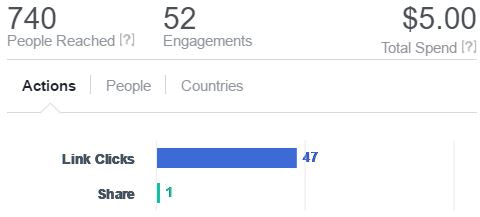
But what if you have a blog post that isn't monetized with affiliate marketing links?
I'd actually still consider spending some money to promote these, with one caveat: You need a way to monetize that traffic.
It's possible to make a lot of money blogging. In fact, the very blog you're reading right now makes tens of thousands of dollars a month in revenue.
The simplest way to monetization is to lead the ads to a blog post with a really strong content upgrade. That upgrade will get them on our email list, at which point you can put them through an onboarding campaign and eventually sell them on your affiliate links or products.
In the end, using paid ads should have some kind of expected ROI, whether that's quick gains like my affiliate linked article or long-term gains like the email onboarding process.
If you're ready to experiment with paid ads, here are a few guides:
- Facebook ads
- Instagram ads
- Twitter ads
- Pinterest ads
- LinkedIn ads
19. Add videos to your blog posts to increase engagement
One of the most important metrics for SEO is your visitors' time on page. One of the easiest ways to increase time on page is by adding video content.
Besides, not as many people are using videos on their blog posts. It's a great way to stand out from the crowd and increase engagement.
The best part?
You don't have to be a videographer genius or spend a ton of money on fancy equipment to get started. In fact, your smartphone is more than enough.
Well, getting a tripod and an external mic can help boost the quality. But they're not necessary.
Here's a quick 3-minute video on how to shoot high-quality video by Pond5.
Note that you don't need an expensive camera for this when you're just starting a blog site for the first time. While it won't be quite as high-quality as Pond5's video, most smartphones can shoot HD video now that will more than suffice.
But what if you're camera shy? That's OK – you can create animated videos so you never have to appear on screen.
Here's a 1-minute video template by Raw Shorts, for example.
They have a free trial, but you have to pay $20 per video at the base price if you want HD quality.
Finally, the last option is to hire someone to create a video for you. You can find video creators on Fiverr or People Per Hour. Just be sure to check out people's reviews before you hire them.

Colin Newcomer
Freelance writer. Helps clients grow their web visibility by writing primarily about digital marketing, WordPress, and B2B topics.
20. Pay attention to your blog's load times (and make them faster)
Whether you're running a business site, an e-commerce store, or a blog…page load times matter.
Google uses your blog's page load times as a ranking factor in its search results, and your visitors just plain hate slow-loading blogs (especially on mobile devices, where most people browse blogs nowadays).
For example, as your page load time increases, your bounce rate (the % of visitors who leave without visiting a second page)goes way up. Look at this data from Pingdom comparing average load times and bounce rates:
To see how fast your blog loads, you can use a page speed testing tool like Pingdom or GTmetrix.
If you find that your blog is loading slowly, here are some ways to speed it up:
- Optimize images – images comprise about 50-80% of the average website. Using a free image optimization tool like Optimole lets you resize, compress, and lazy load images to shrink their size without affecting user experience.
- Use a caching plugin– a caching plugin speeds up your blog by serving static HTML instead of using PHP for each page load.
- Pick a faster host– your host always affects your page load times – here are some of the best managed WordPress hosts.
What's key here is to be performance-oriented from day one when you're figuring out how to start a blog, and not treat it as something you can come back to later on.
For a lot more tips, check out our posts on speeding up WordPress and website speed optimization.
21. Don't try to please every single person when starting a blog
If you're starting a blog, you probably want people to actually…read your blog. I think that's a safe assumption, right?
That pull to be "liked" can cause you to try to make your blog appeal to as many different people as possible. And while that can work, it usually doesn't. By trying to appeal to everybody, you really just end up appealing to nobody (OK, nobody is a bit hyperbolic…but you get the point).
I'm not talking about choosing a tiny niche, but more creating a specific brand and voice for your blog.
Are swear words part of your personality? Then swear on your blog! Sure, you might drive some people away, but you don't have to please every single person. Everyone who isn't driven away will like you even more.
Don't believe me? Look at Mark Manson:
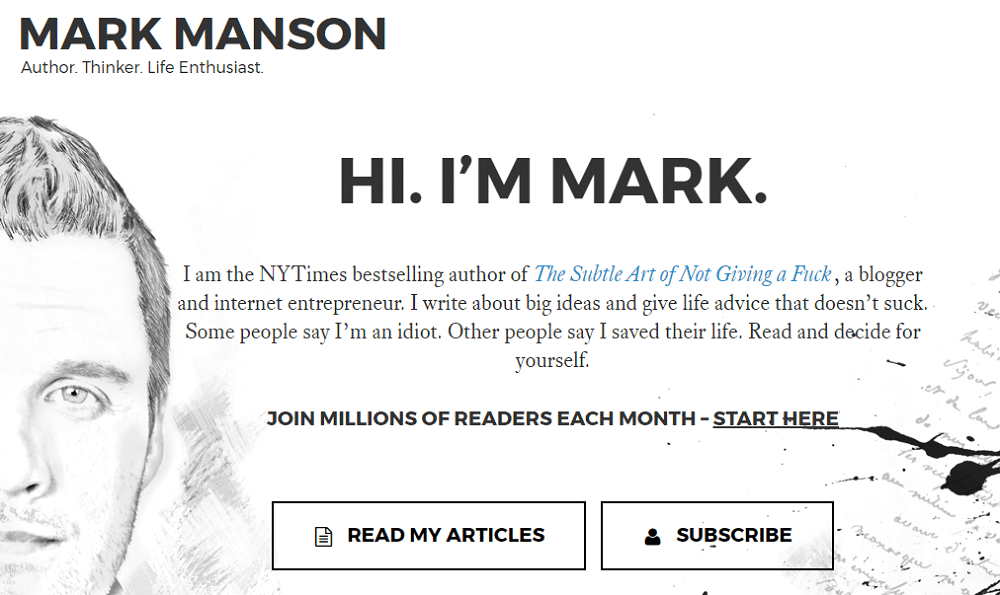
Can you imagine if Mark tried to be some straight-laced personal help blogger? He never would've grown to where he is (which is a New York Times Best Selling Author, if you're not familiar).
Don't try to please every single person – just try to make a group of people really happy.
22. Stop writing intros like high school research papers
If I had to pick one piece of content that's had the greatest impact on my blogging, it's this one from Grow and Convert:

Content Marketers: Stop Writing Blog Intros Like A High School Research Paper
It had such an impact on me because I immediately knew that I was guilty. I was bringing my high school English repertoire to my blog, and that wasn't good.
Now, I try to speak with readers, not at them. If you want people to engage with your blog, you should do the same.
I won't rehash what Devesh said because he already laid it all out perfectly. Just read his post and try to start applying the ideas to your writing – and don't wait, do this right now as you're learning how to start a blog for the first time.
23. Don't wing your content. Make a plan
When you're starting a blog, you have a whole world of topic ideas available to you. As a result, it's easy to fly by the seat of your pants and still do just fine. But as your blog ages, two things start happening:
- It becomes harder and harder to come up with unique content ideas.
- You develop more refined promotion tactics for your blog posts that actually require some planning.
When that starts happening, it helps to have a plan. In this case, that's an editorial calendar.
Your editorial calendar is basically your entire content plan, from topic ideation all the way through to promotion.
It helps ensure that you post consistently, know what you're going to write about, and have proper time to promote your content.
For a free solution that's perfect when just starting a blog, you can use Trello or the Editorial Calendar plugin. Otherwise, CoSchedule is one of the most popular editorial calendar services.
24. A little bit of maintenance now saves big problems later
Look:
No one likes doing maintenance. Maintenance itself doesn't build your blog's content, audience, or revenue. So what's the point?
Well, while it might not do any of those things, maintenance prevents everything you built from crashing down around you…
I'm talking about things like:
- Updating your software and plugins
- Backing up your site (and actually testing to make sure those backups work)
- Optimizing your database
- Checking for broken links
It's tedious but crucial. Just recently, hundreds of thousands of WordPress sites were hacked as a result of a vulnerability that was actually patched before it was discovered by hackers.
But because hundreds of thousands of site owners hadn't updated their core open-source WordPress software – they got hacked nonetheless.
A little of routine maintenance now will prevent big problems from happening later.
If you don't want to do this yourself, there are plenty of WordPress maintenance companies who will handle things for you…for a fee.

25. You can reach new followers by resharing old content
We already talked about sharing your content on social media. But here's the thing:
As your personal blog grows, you're going to pick up new social media followers. So even if you shared a post when you first published it, those new followers will never have had a chance to see that piece of content simply because they didn't follow you when you posted about it.
Tomasz Tunguz found that recirculating old content still garnered significant engagement numbers. While the numbers were never as large as when first shared, the reshared content still got enough interaction to make it worthwhile:
It's not a difficult idea to grasp…but it is one that's easy to forget about if you're starting a blog. Thankfully, you can put this whole process on autopilot with Revive Old Post (one of our tools).
26. Complicated WordPress themes are always not the best themes
I might catch some flak for this one. But I'm not taking a shot at the vast majority of WordPress developers – I'm just gunning for some of the bloated monstrosities you'll occasionally find on ThemeForest.
If you go for a theme that tries to handle everything and the kitchen sink, you may just end up slowing down your site with convoluted code and/or heaps of extraneous requests. Both those things mean worse performance and more chances for things to break.
All I'm saying is this:
Don't pick a WordPress theme just because it looks pretty or has a functionality list longer than Infinite Jest.
When starting a blog, try to find something that's, at a minimum:
- From a reputable theme developer
- Well-rated (if public ratings available)
- Regularly updated
- Has all the basic features, like a configurable sidebar (widgets, blocks), good header, nice typography, and good color settings
If you want some more specific advice, we have posts on how to choose a WordPress theme as well as whether you should go with a free or premium theme.
27. Steal your competitors' keywords, it's awesome
We've already talked about primary keyword research. But sometimes I'm feeling lazy and would rather have someone do the work for me.
That's when I go to my competitors and…steal the keywords they're ranking for.
There's nothing malicious about it – just good old fashioned research and "doing it better". All I do is go to my SEO tool, plug in my competitor's URL, and see what they're ranking for:
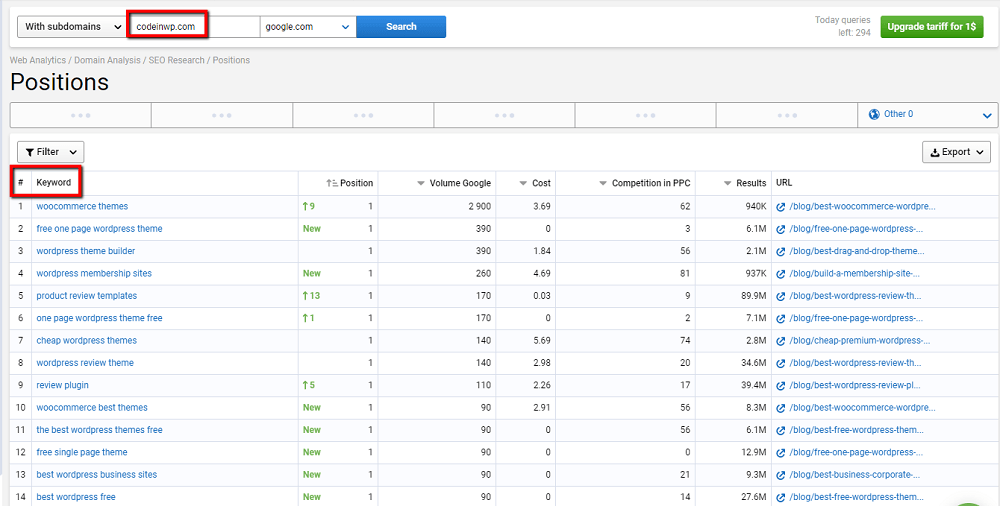
If I find a juicy keyword that I'm interested in, I check out their post and write one that's better.
This is one of my favorite strategies because it helps you both come up with topics and keywords in one fell swoop.
Additionally, because you already know that your competitor is ranking, you also know that Google is willing to rank blogs highly for that keyword (which is especially important if you're learning how to start a blog in a niche with lots of e-commerce sites).
I personally use Serpstat for my research, but Ahrefs and SEMrush are two other great options.
28. Headlines matter. Don't miss out on clicks
When starting a blog, headlines matter for two reasons. They:
- Make your readers click on your site in organic search results.
- Grab your readers' attention to make them actually read the rest of your post.
It's a common refrain that 8 out of 10 people read your headline but not your copy…but that stat is from 50 years ago when we had newspapers, not blogs and eye-tracking studies.
Still, a simple perusal of your bounce rate and average time on site will provide proof enough that most people aren't making it past your headlines.
Copyblogger has a great resource on how to write headlines that work. And you can also get some more data-focused insights like:
- People dig numbers in headlines (hey – look at this post!)
- Some words get more Tweets than others
- Using more verbs than nouns is usually a winning combo
29. Add a FAQ section before your contact form to save time
When first starting a blog, you put up a contact form because you think it's something you need, even if you're not expecting anyone to use it.
Then, as you start to get a little bit of traffic, someone actually uses your form and sends you a message. Hallelujah! A human person cares about your content enough to use your contact form!
Then your blog keeps growing and suddenly you find yourself inundated with a deluge of messages, many of which ask the same thing.
Suddenly, you're spending more time replying to emails than you are blogging. And that's not a good recipe for continued success.
But guess what? You can at least eliminate many of the most redundant emails that you get by adding a FAQ (or something similar) above your "Contact" page. For example, check out how Henrik at The Positivity Blog has two quick FAQ questions above his contact form:
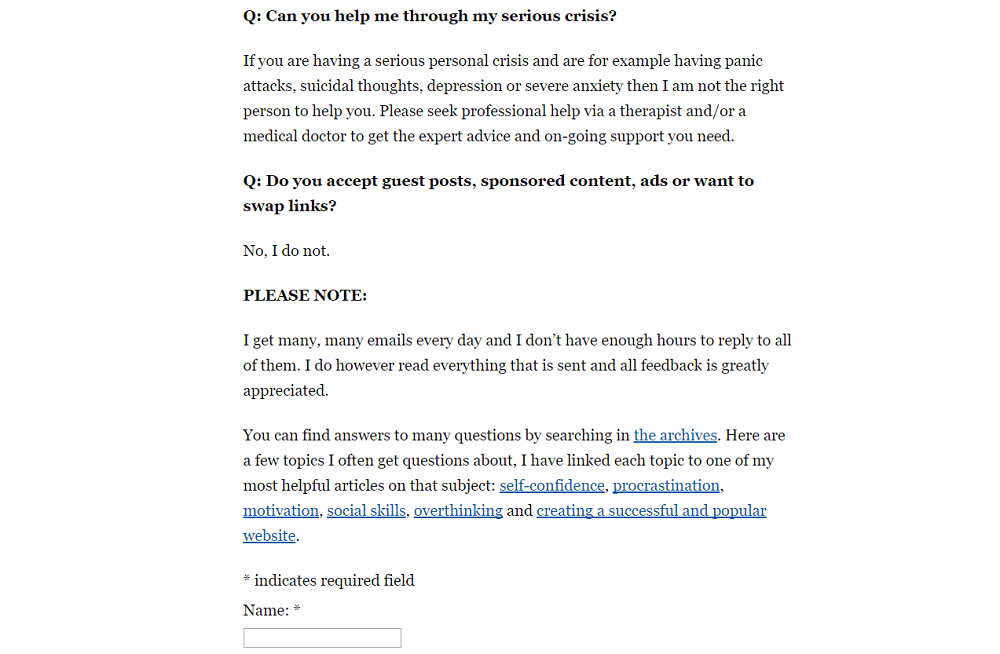
If your contact form plugin allows it, you can also use conditional fields to achieve much the same effect by asking users what their email is about before they're allowed to send it.
30. Make a habit of testing important pages on your site (like forms)
I still feel like banging my head against the wall over this mistake that I made…
I switched contact form plugins on my site and, soon after, started noticing a drop in messages (this was my portfolio site – so the messages were important). Naturally, my first instinct was to check for a problem with my contact form plugin.
But after sending test message after test message, I couldn't find a single thing wrong with my form plugin. I guess people just didn't like me as much anymore…
Eh, not quite. See – it turns out that I wasn't testing my forms the right away. There was a problem, but it was a caching issue. Because I tested my form plugin via my admin account (which was excluded from seeing cached pages), I never ran into the issue in my testing.
Don't make my mistake. If you have any important pages on your site – make sure to test themas your end users will see them. That is, at least use incognito mode.
Wasting your effort because of non-working pages sucks…but a little bit of testing can prevent that from happening.
31. Ignore the haters…most of the time
If there's one thing all bloggers have in common – no matter if you're just starting a blog for the first time or not – it's this:
Angry comments.
Even if you want to learn how to start a blog writing exclusively about cute puppies, I can almost guarantee you'll still get angry comments from people who:
- Think you forgot about the cutest puppy ever.
- Don't think one of the puppies you posted is cute.
As YouTube demonstrates, though, angry comments are just a fact of putting yourself out there on the Internet.
You will get them, and they will sting…if you let them.
You need to develop thick skin. Most of the time, these comments are just angry people hiding behind anonymity. Occasionally, you will get a comment with a legitimate gripe that you should address. But the vast majority of the time? Angry comments go in one ear and out the other.
32. Stop staring at your analytics data
Staring at analytics is almost as addicting as your Facebook news feed. And when you start to see your numbers consistently grow, it gets even be more addicting.
But here's the thing:
Unless you're running a huge ad campaign that requires real-time monitoring, these analytics don't matter at all in your day-to-day life.
Yes – looking at analytics data over time is helpful. But do you really need to know if you had 100 or 200 visitors today? Does it matter whether you earned $10 or $12 via Google AdSense today? Does any of that data actually do anything for you in the moment?
Years of experience have taught me that it doesn't.

I encourage you to set strict limits to avoid wasting time. You really do have a lot more important things to do when starting a blog. Say something like, "I will only check my analytics on Monday morning." That's still frequent enough to see how your site and content is performing, but not overly frequent so as to become a time-suck.
33. Hosting matters!
Hosting is something that we take very seriously here at CodeinWP. We've done our hosting surveys, our hosting reviews (for multiple different types of scenarios), and everything in between, it seems.
But I, personally, wasn't all too worried about hosting or anything server-related for the better part of my blogging journey and especially not when I was starting a blog for the first time.
This changed dramatically one beautiful day when I discovered that there had been a whole spam forum running on my server … and for who knows how long at that point.
The way I discovered was also kind of funny. I got an automated email instructing me to "update my vBulletin forum." I didn't have a forum.
So as it turned out, the email was sent to a random email address sitting on my new domain name – newinternetorder.com. And since I had a catch-all feature set there for email, it got redirected to my actual email. I started looking around, and lo and behold, I found this:

That's the forum. Just sitting there, fully indexed by Google, and full of outbound links pointing to other websites using fun anchor texts like "louis vuitton bags" or whatnot.
Anyways. Long story short; this was the day I learned the value of reliable and high quality hosting. This sort of infection happens at server level. It's not a WordPress issue or anything.
Please, do yourself a favor. Work only with reputable hosting providers from day one when starting a blog. It's not such a huge expense anyway, you can get something for as low as $3-4 a month on an entry-level hosting plan. Bluehost is good. SiteGround as well. Digital Ocean if you're server-savvy. Or WP Engine if you want to spend some more. We've looked through all these companies in our research piece.
34. Do regular content audits
As much as I would love for this not to be the case, not everything we publish remains evergreen indefinitely. Regardless of your niche, there are always new developments, new ideas, new things to write about, and also new things that relate back to your older content.
The simple fact is that no one can predict the future. So even if you think that the piece you've written will remain timeless due to the topic matter it touches on, this is only a wish and you can never be certain.
For that reason, doing regular content audits is a great idea, and especially if you've had your blog online for more than 12 months – perhaps not the thing to worry about if you're just learning how to start a blog for the first time, but still worth keeping in mind.
The goal of a content audit is simple: check which of your posts are still relevant, which need updating, which can be removed entirely, which can be consolidated.
This is something that Pat Flynn talked about in one of his podcast episodes featuring Todd Tresidder. In it, Todd actually shared how deleting a third of his content tripled his traffic, believe it or not.
Here's the in-the-nutshell version if you don't have the time to listen to the entire episode + some tips of my own:
Start by compiling a spreadsheet featuring all your posts (URLs are enough). Divide that spreadsheet into three sections:
- "Keep and improve" – posts that are good on their own and still relevant; might need some work to bring them up to date or expand (new data, new insights); in other words, we're making them even better than they are now.
- "Consolidate" – smaller posts that can be combined into a bigger post; this makes the resulting resource much more in-depth and complete.
- "Delete" – posts that are completely irrelevant at this point in time and can be deleted entirely (think old sponsored posts, old news posts, reviews or how-tos relating to things that are no longer around, accidental duplicate content, etc.)
Once you have those, you can begin working on them, in this order: start by deleting content, then consolidating, then improving.
Some things that you can do when going through the individual pieces of content:
- Set up 301 redirects when consolidating posts into bigger resources.
- Set up 410 status codes for content permanently deleted.
- Fix internal links when working on posts that you've decided to leave online. Make sure that they link to your newer content as well. (Naturally, internal links from old posts don't point to your new content since those were not around when you created the links.)
- Fix the formatting on your old content – use H1, H2, bullet points.
- Update images on your best posts – make them more sharable on social and up-to-date with the current requirements for social media images. You can use any of these tools.
- Fix Yoast SEO plugin metrics.
- Remove dead links.
- Fix any in-line HTML issues.
- Add content upgrades where relevant.
- Update your tags and/or categories to make the whole site more consistent.
- Republish old content if it makes sense. Just change the publication date to now.
- Delete comments when you republish.
Doing an audit like this and reviving your past content is only proof that you care about what people see when they come to your website and begin consuming a random piece of your content. It's basically a signal to Google that everything on your site deserves to rank since it's all kept up to date. This might not sound like it's that important if you're just starting a blog for the first time, but it's actually best to incorporate these tactics right from day one – this is how you get the most out of it over time.
How often to do the full audit? Probably once a year. But there's something you should be doing more often:
35. Update your content, regularly
I've mentioned this briefly above, but it deserves its own spot on the list, so here goes.
It basically comes down to this:
Your content isn't evergreen unless you put in a conscious effort to keep it that way.
Let me show you something; this is one of our list posts on this blog – featuring some great free WordPress themes. Here are all its revisions:

That has to be over 100 updates spanning 3 years.
This is an extreme example. We don't update all of our content this often. But still, the message remains:
Your content absolutely deserves to be updated on a regular basis. There's always new information popping up, new data, new techniques, methods, products, or whatever else it is that you write about. Your audience wants to read about what's new. Google wants to see you write about it too. Literally, the world wants you to keep your content up to date. If you don't … goodbye your Google rankings.
Updating your old posts is one of those techniques that basically every blogger with experience speaks highly of. Neil Patel, for instance, says that bringing his old posts back to life resulted in 51% more traffic over a three-month period.
Here's what you can do specifically:
- Go to your Google Analytics, and create a list of your top 10 most visited posts.
- Make an effort to update those once every month.
- Go back and expand the list to top 30-50.
- Make an effort to update those every 3-5 months.
- Create a spreadsheet to make that more manageable, or a Google Cal reminder.
36. Easy on the number of WordPress plugins you have
Chances are that you really do not need all those 30 plugins currently running on your site and especially not when you're starting a blog.
And I know it's easy to get carried away and lose yourself in yet another list of "top 10 WordPress plugins for X," but that's really not the way to live your WordPress life, so to speak.
First off, not every little feature you want requires plugins or add-ons. Many can be done with simple WordPress hacks or other quick modifications. On top of that, other things you actually don't need at all – they're just one more "shiny object" that looks cool but isn't actually all that useful.
Also, not all plugins/add-ons work together that well. Sometimes you'll stumble upon things interfering with each other, thus making your site crash (worst case scenario) or your performance drop significantly (best case). And don't even get me started on having multiple plugins trying to do the exact same thing (installing W3 Total Cache on top of WP Super Cache, for instance).
Instead, focus on just the essentials, and get just one plugin per purpose. Usually:
- SEO,
- backups,
- caching,
- social media,
- contact forms,
- Jetpack … possibly.
Which brings me to the next point that's truly crucial when starting a blog:
37. Mind your site's security, damn it!
Okay, so some things are outside of your control. If your server crashes, there's not much you can do about this, but there are also multiple other things that you indeed can control.
First off, as Colin said above, keep your site updated. If you don't, you risk having it hacked via some old vulnerability.
Secondly, get yourself a security plugin/solution and pay attention to the notifications it's sending you.
Really, this one is a no-brainer, there's no need for me to keep talking about this. You absolutely need this!
Some options from the official WordPress.org directory:
38. Don't sweat over your Google PageSpeed Insights score
You know why you shouldn't sweat over this? Because most of the time you can't even improve it by much anyway.
A while ago, we did a fun experiment. We wanted to check what sort of impact you can have on your PageSpeed Insights score once you get your initial grade. So we got a hosting plan with two setups, did the testing, and then optimized the lower-performing one via a couple of standard methods.
The results were kind of surprising (or not surprising at all, depending on how you look at it). It turns out that having your site on a fast host is much more important than doing any other optimizations.
Long story short, the faster hosting setup still got a better grade right out the gate than the slower hosting even after doing a range of optimizations to it. Here's the complete experiment.
In the end, this all comes down to, again, getting a good hosting setup. This is always the easiest and best way to improve your PageSpeed Insights score when starting a blog.
39. Use Quora to really find out what people want to learn
Bill already mentioned Quora above, but I'm listing it for whole another reason. This is not about finding relevant Quora threads, submitting your answer, and then plugging your content. This is about something else:
Quora is one of the few places on the web where you can go to find out what people truly want to learn about. Basically, every question is an opportunity for you to write a completely new post on your blog – a really awesome helper when starting a blog.
All it takes is going to Quora, following a handful of topics that relate to your blog niche, and paying attention to the questions that people ask.
Here's what you achieve when you do that:
- First, you know that the issue indeed is important to at least one real, breathing person – in other words, you have confirmation that a given problem doesn't exist only in your mind.
- You see the exact wording the person used to ask the question – you can use that as your headline, even, or part of it. Also, this gives you an indication of the type of keywords that might be related to the problem.
- You have a great place to then promote that post once done. You can come back to Quora, answer the question in a simple and quick way, and then add a link for whoever wants to learn more.
This is the exact thing we did with at least a handful of posts here:
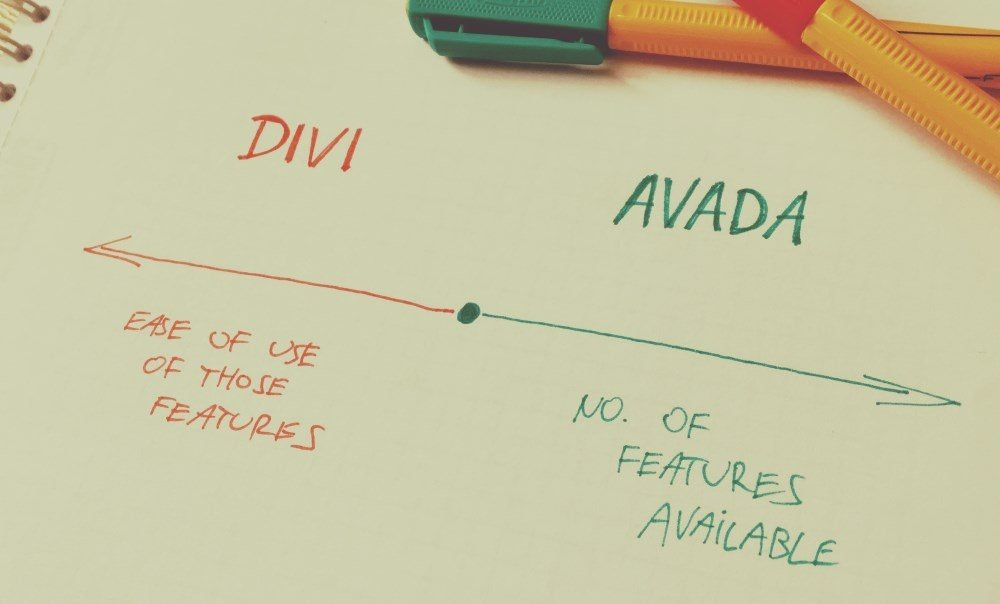
Does Avada have more features than Divi?

Shopify versus WordPress, what is the comparison between each one?

What is the best WP plugin for a club member directory?
Key points:
- When building a post like that, make sure that you get to the core of your answer right away. Like Colin said, forget your intro writing like high school research papers.
- If you need to write an intro of some kind to not alienate your regular readers then at least use document anchors when linking to the post from Quora. (E.g. link to your post as
yoursite.com/some-post/#the-relevant-part.) That way, whoever's coming from Quora can skip what's not important from their point of view. - Use images to make your Quora answer stand out from all the other ones. Neat trick. Some examples of mine above.
40. Do keyword research for each and every new post you publish
We've mentioned keyword research here already, but I wanted to open this can of worms for one more minute just to make sure that we're all on the same page. There's one main thing that I wanted to reiterate here:
The key to real, proper keyword research is doing it over and over again for every new post you publish.
Sounds like a lot of work, I know, sorry about that, but there's just no other way to do content publishing in the web landscape of today when starting a blog. There's just too much great content out there already. Too much content that's already quite optimized. In an environment like that, you can't just rely on your main keyword for the entire site and then keep creating your content around "whatever" loosely connected topic.
This also goes back to doing content audits. When going through your past content and auditing it, ask yourself, "What keyword is this post even targeting? Is it optimized enough?"
41. Get inspiration from seemingly unrelated niches
Coming up with good blog post ideas can be tough at times. But keeping yourself inspired by consuming content only from within your niche can be a double-edged sword.
- On the one hand, it keeps you informed and with your finger on the pulse.
- But on the other, it doesn't let you open up to new ideas and perhaps try out new things that haven't been tried before.
A popular author and podcaster, James Altucher says that idea sex is one of the most powerful things that a creative person can experience (paraphrasing). In other words, the only way to have good ideas is by having lots of ideas. And once those ideas start having sex with each other this is when great things/products/articles are born.
That's why we need to expand. Read a lot. Watch a lot of videos. Do a lot of stuff. Allow yourself to consume content outside of your niche. This is perhaps the ultimate path to follow when starting a blog.
Tim Ferriss – an Amazon bestselling author – also sees value in allowing himself some freedom in this regard. One of his things, for instance, is reading fiction before bed. He's not a fiction writer. It would have seem that reading fiction should be doing nothing for him. But still:
Do not read non-fiction prior to bed, which encourages projection into the future and preoccupation/planning. Read fiction that engages the imagination and demands present-state attention.
Tim Ferriss
42. Give your best stuff away for free
This is about paid vs free content. It's a common mistake to think that your best content should be reserved for your paid customers.
Nope!

Think of it this way, when you turn on the radio (if you haven't moved to Spotify or podcasts completely yet, that is) what do you hear? Do you hear a random song from an artist's album?
No! You're hearing their absolute no.1 hit! And you're getting it for free. Why? Because this is how they get you to buy the album or the concert ticket.
Call it the "radio principle" if you want.
The thing is this:
Free, awesome stuff gets people through the door. When they come, they start searching for more. They begin thinking, "damn, this free resource is better than what other people charge for!"
That's a win.
This is where you get to sell one-on-one consultation, premium multi-part courses, speaking appearances, real estate … you get the idea.
In a nutshell: Starting a blog? Give your best stuff away for free. It has a huge ROI!
43. Stop obsessing over grammar. Nobody cares
(Except this one person who will point it out in the comments. Don't worry about him. He's a jerk anyway.)
The core of the information is what truly matters. And I know it sounds corny, but it's just how things are.
No one – and I really mean no one – will ever read your blog just because your grammar is spot on. If "good grammar" is the only thing you have going for you, you've lost.
In other words, a badly written, insightful post is always going to be better than a nicely written, sexless press release.
Ideas! Stories! Entertainment value! Raw information! Invest in your content muscle first, and only then focus on your grammar muscle.

However, with that being said:
44. Writing, editing, publishing – it's a 3-step process
Even though grammar isn't something you should be obsessing over, getting a quality post out the door and into the wild is still a process that needs to be thought through.
My favorite approach is to treat it as a three-step thing: writing, editing, publishing.
Why like that?
It's simple, as you're writing, it's easy and tempting to edit on the fly – as in, fix your sentences/paragraphs as you write them. It seems natural, it's what we did when writing papers for school. But it's not the most effective.
The problem with editing as your write is that it stops the flow of ideas, disrupts your creative thinking and makes storytelling harder.
The correct way of blogging – I dare use the word "correct" – is to write first, edit later.
Let it be your mantra! "How to start a blog? Write first, edit later!"
The goal when creating the first draft is to get as many words as possible onto a piece of paper (or digital paper) and not worry about how it all looks. I really mean that you should write down everything that you can think of that relates to the topic.
The important thing here is to not stop yourself and try to fix anything. Not even typos. Your goal is to write. To be creative.
Then, once you have the whole draft written, this is when editing can take place. This is when you can go back to your draft and start fixing it.
And I do realize that this separation is something incredibly difficult to keep up with. I too catch myself editing this or that as I write, but the key is to notice this and try snapping yourself out of it.
Lastly, there's publishing, which is kind of its own thing nowadays since most of what we write gets published online by us (and isn't sent to a third-party newspaper or something).
Blogs are unique in the way they work. I mean, apart from the body of your article, you also need to prepare the headline, format the post, add some images, set your tags/categories, add some "click to tweets" maybe, and do a myriad of other things – all the things that starting a blog involves. This is all in the "publishing" bucket. Do this last. Work on making your post look great immediately before you hit the publish button.
45. Set up your blogging/writing tools right
So depending on how you go about starting a blog and creating your content, you might find certain tools very helpful in your day to day.
Whether it's a standing desk, a new keyboard, or a cool web app, tools make your blogging life a lot easier.
Let's just go through this shortlist one by one:
I. Please, get yourself a good keyboard
Hold on! Please don't skip reading this one! It's important.
A keyboard is perhaps the most underrated piece of equipment that we interact with on a regular basis. Most of our interaction with a computer happens via a keyboard, right?
Yet, we rarely switch keyboards, and don't usually track what's been going on in the keyboard market. We just get whatever's available or whatever our computer came with. But that's a mistake.
Keyboards are vastly different, and there isn't one keyboard to rule them all. This all comes down to your personal preference, your skill as a typist, and your general comfort depending on your position. That's why you need to experiment with different setups to find the one that's a perfect fit.
Some keyboards have low travel keys, others high travel. There are mechanical keyboards. There are membrane keys. There's whatever MacBooks have these days. Etc. But the fact to the matter is that you never know which of them is going to be better for you until you try them first hand.
So go to your local store and experiment. Just hang around, fire up a notepad tool, start typing, see how it feels. Getting the right keyboard can transform you into a master typist overnight – at least what it did for me.
II. Try out blogging apps
Doing your work all within WordPress' interface is all fine, especially in the distraction free mode.

But when starting a blog, you might find yourself even more productive in some dedicated blogging apps.
For instance, my two favorite ones are iA Writer and Bear.
- iA Writer is probably the best writing app for Mac (albeit just my opinion).
- Bear is a nicely designed note-taking app for Mac that also doubles as a great text editor. And has a better integration with the MacBook Pro touch bar than iA does.
Both apps support markdown, which is a much quicker way to write anything.
Apart from that, if you have more devices, you can synchronize your content across all of them.
Some other options:
- WordPress desktop app – Calypso. This one is available for Windows, Mac and Linux. It also gives you access to some other parts of the wp-admin.
- Ulysses for Mac. Rather expensive writing app, but it has a lot of die-hard fans that absolutely love it.
- Google Docs. This one sounds obvious, but with the newest tools, you can now integrate a Google doc with your WordPress site directly, which means that you can basically export any doc straight to your blog. More on this here.
III. Experiment with helper apps
Here's a quick run-down through apps that make my work a lot quicker:
- Lightshot – the ultimate screenshot tool.
- Alfred – Mac productivity app, think of it as Spotlight search on steroids.
- aText – text expander app for Mac. "aText accelerates your typing by replacing abbreviations with frequently used phrases you define." For example, I tend to use the word "WordPress" a lot, so instead of having to write it by hand every single time, I've set a macro that allows me to just write
WPP, and aText will right away expand it toWordPress. I have loads of other ones like this set up (for common typos I make, complicated words, etc.). - Notion – great tool for organizing your work such as article outlines, ideas, or anything else.
- Password managers – these help you keep track of usernames/passwords for all the other stuff.
- BetterTouchTool – your Mac touchpad and touch bar on steroids. I use it for custom gestures, and also to get these shortcut icons (among other things):
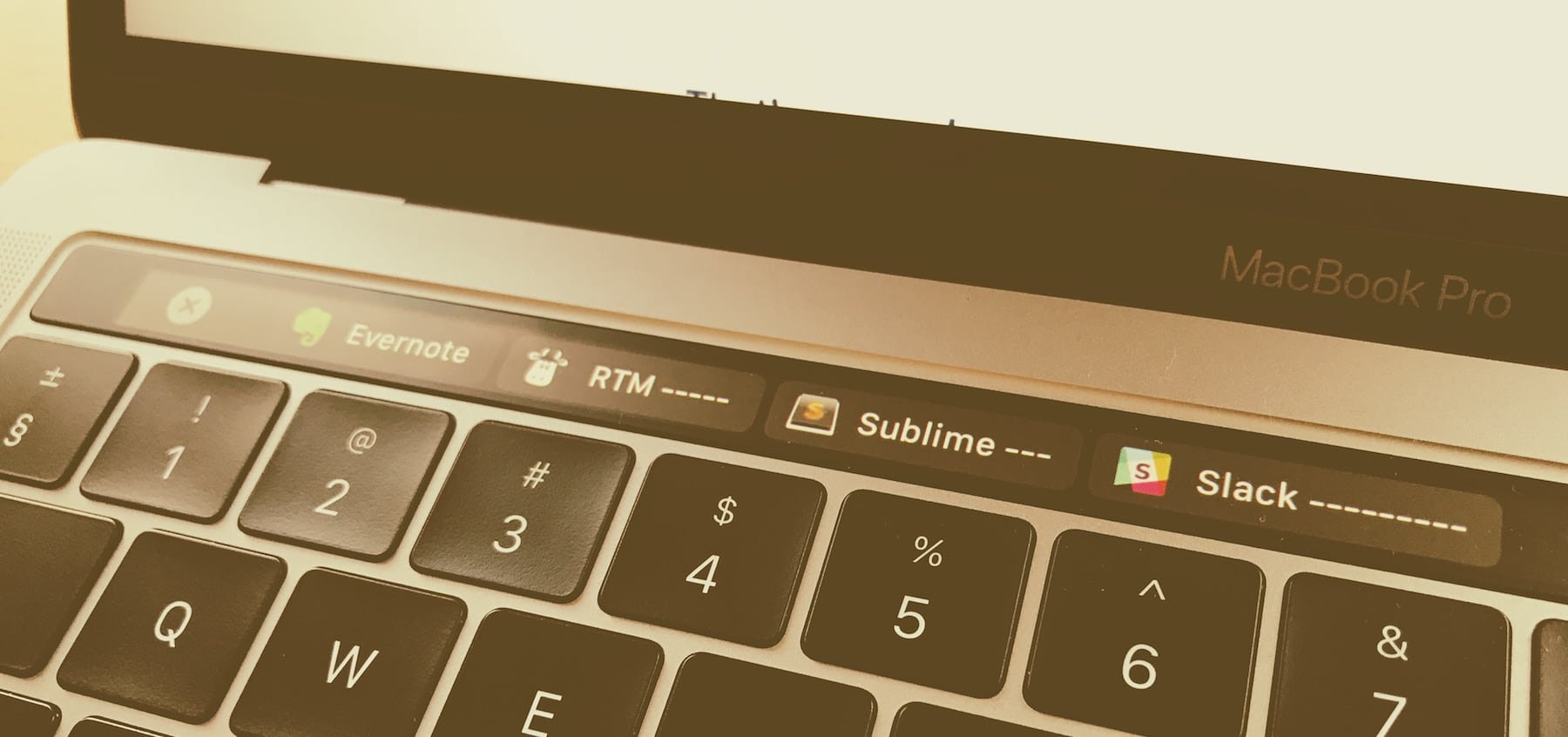
FAQ on how to start a blog
Here are some of the most commonly asked questions by people who are thinking about starting a blog:
Can I do it all by myself without anyone's help?
Yes.
There really is not much more to say here … you really can learn how to start a successful blog and then execute on that knowledge by yourself. Plus, the final effect won't necessarily be any worse than if you had a pro designer or developer on the payroll. The tools have evolved a lot over the years – they're very user-friendly and easy to grasp nowadays.
What do I need in order to get started now? Do I need to know how to code?
You need a computer and a fistful of dollars. All the other stuff is optional.
There's no coding knowledge required, no website-owning experience, and no design skills or whatnots.
The reason why this is the case is because of what I mentioned above – we simply have more functional and easier-to-use tools at our disposal these days.
In short, here's what the steps are involved in starting a blog (we discuss them more in depth in the following chapters):
- Sign up for blog hosting (we recommend Bluehost *).
- Pick a custom domain and blog name to match (Bluehost gives you a free domain name).
- Complete your blog hosting registration.
- Select a checkbox to install WordPress automatically.
- Log in and write your first blog post.
* When you're ready to buy your hosting, make sure to use the above link for Bluehost. It is an affiliate link (meaning that we'll get a small commission), however, it will also unlock a $2.75 vs $3.95 discounted price for you. You won't get this discount if you visit the Bluehost site in any other way than via the link above.
Can I create a blog for free?
In a word, yes. But that's not the best path to take.
While there are blogging platforms out there that allow you to build a free blog (like Tumblr or Wix/Squarespace), they do carry a number of limitations:
You're stuck with the platform's subdomain and can't get your own domain name without paying a fee.
You're often not allowed to do much in terms of customization or installing new features.
Your options to blog monetization are limited – not all platforms allow you to sell your products or promote other people's stuff via ads.
You can be forced to host the platform's own ads on your site.
At the end of the day, if you instead choose to shell out a modest fee, you can do away with all of the above issues and create a fully functional blog on your own.
People say blogging's dead. Are they right?
"Blogging is dead" is something people have been saying for years now. It's hard to even pinpoint when the phrase appeared for the first time.
There have been a number of supposed killers of blogging. First there was social media, Twitter and Facebook, then YouTube, live streaming services, and who knows what else.
But!
The data says otherwise.
Raw data has one advantage, it doesn't take sides.
Let me show you two things:
- According to WordPress.com, more than 409 million people view more than 20 billion blog pages each month. On top of that, users create nearly 70 million new posts and nearly 77 million new comments each month.
- WordPress – undoubtedly the biggest blog and website engine of them all – now powers more than 43.1% of all websites. Again, that's all websites.
So no. Blogging is far from dead.
After I learn how to start a blog, can I then turn that blog into a business and make money from it?
Yes, of course.
Just look at what we've done here with this very blog.
When we started, the blog was making $0, understandably. But within ~3 years, we've grown it to ~$20,000 per month in revenue and beyond.
How does it make money exactly and how have we achieved it? We'll get to that later on. But let's just say that it took us some trial and error to get to that level. We try to boil it all down in this step-by-step guide and present you with a structured, systematic approach.
How to start a blog in 2021
Just as promised at the beginning, what follows is our complete guide to starting a blog in 2021!
This guide shows everything we've learned from building and growing this blog for the past 8+ years. Through trial and error, we've been able to get to over 400,000 visitors and $20,000+ in revenue each month.
We want to show you how to work towards similar results, and how to use our strategies and tactics when creating a blog of your own.
How to start a successful blog – an overview
Here are the individual chapters of the guide. Click on any of them to find out how creating a blog is done, step by step:
Would rather read a PDF? Download the complete guide here:
👇👇👇

📹 Bonus video: how to start a blog on WordPress
Take the leap!
In the end, building a blog is one of those things that seems simple in itself, but the gap between just doing it and doing it to its fullest potential is actually huge. There's just so many moving parts! There's WordPress itself, writing content, editing, formatting, hosting, SEO, link building, social media, email lists, networking, and on and on and on.
I hope this resource has been insightful, and that it's going to help you avoid some of the early mistakes that most bloggers make. If you want us to expand on any of the points discussed here, feel free to submit your questions below.
Without further ado … the first step to starting your own blog? That would be picking a topic:
* This post contains affiliate links, which means that if you click on one of the product links and then purchase the product, we'll receive a small fee. No worries though, you'll still pay the standard amount so there's no cost on your part.
How To Build Own Blog Site
Source: https://www.codeinwp.com/blog/starting-a-blog/
Posted by: boydollourety.blogspot.com

0 Response to "How To Build Own Blog Site"
Post a Comment